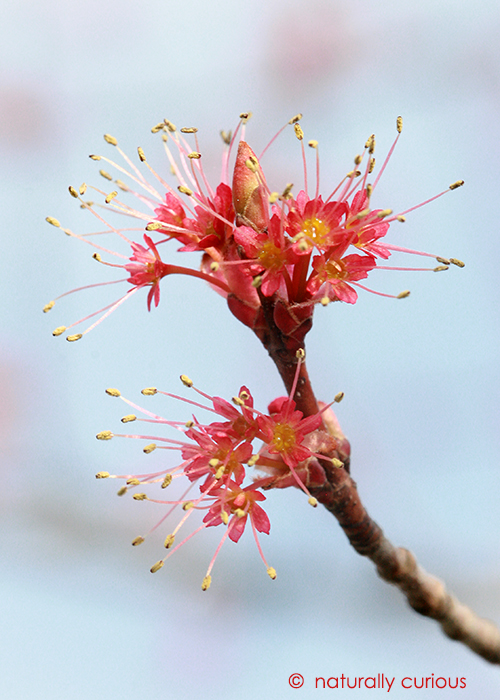Bottle Gentian Pollination

Getting inside the flower of Bottle Gentian or Closed Gentian (Gentiana clausa), one of our latest flowering plants, in order to collect nectar and pollen is a monumental task that few insects, other than fairly large species of bumble bees, attempt. The petals are closed so tightly it takes even bumblebees several seconds of pushing, shoving and cramming to push the petals aside and get through the miniscule opening at the top of the blossom.
Pollen is the primary bumblebee attractant, as the sugar concentration of Bottle Gentian’s nectar is fairly low. Some bumble bees take a short cut – they chew a hole to gain access to the reproductive parts of the flower. The hole is often two-thirds of the way up the blossom, directly opposite the pollen-laden anthers within the flower. Look closely at the hole in the lefthand blossom in the photograph and the adjacent, dissected blossom, and you will see that the bee’s aim was dead on. You can even detect a portion of the anther through the hole.
Red Maples In Bloom

Red Maples (Acer rubrum) are celebrated in the fall for their vibrant colors, but they produce equally vibrant reds and yellows in early spring when they are flowering. Most Red Maples have dense clusters of either male flowers or female flowers (dioecious), although some have both male and female flowers (monoecious). Under certain conditions, a Red Maple tree can sometimes switch from male to female, male to both male and female (hermaphroditic), and hermaphroditic to female.
The showier male, or staminate, flowers contain between four and twelve stamens, with long, slender filaments and red (young) or yellow (mature) anthers at their tips. Both red sepals and petals can be seen at the base of the stamens. A staminate Red Maple in full bloom is a blaze of gold and red. (Photo: mature staminate Red Maple flowers)
Naturally Curious is supported by donations. If you choose to contribute, you may go to http://www.naturallycuriouswithmaryholland.wordpress.com and click on the yellow “donate” button.
Bloodroot Pollination
 Thank you for all your guesses, a vast majority of which were right on the mark. Bloodroot, Sanguinaria canadensis, is one of the first spring ephemerals to bloom. On sunny days its petals are open wide, closing at night when the temperature drops and on cloudy, rainy days (when pollinating insects are less apt to visit). Only pollen is produced by Bloodroot – no nectar. Even so, insects, especially mining bees, visit and collect pollen, and in the process often pollinate the flower.
Thank you for all your guesses, a vast majority of which were right on the mark. Bloodroot, Sanguinaria canadensis, is one of the first spring ephemerals to bloom. On sunny days its petals are open wide, closing at night when the temperature drops and on cloudy, rainy days (when pollinating insects are less apt to visit). Only pollen is produced by Bloodroot – no nectar. Even so, insects, especially mining bees, visit and collect pollen, and in the process often pollinate the flower.
The methods which Bloodroot employs in order to become pollinated are impressive, to say the least. While cross-pollination is preferable, self-pollination is better than nothing. To limit self-pollination, the female stigma becomes receptive before the male anthers of the same flower produce pollen. Furthermore, during the first few days of the flower opening, the anthers bend downward toward the outside of the flower, away from the receptive stigma, where they are easily accessible to insects. If insect pollination doesn’t take place by the third day of flowering, however, the anthers bend inward, contacting the stigma and self-pollinating the flower.
Naturally Curious is supported by donations. If you choose to contribute, you may go to http://www.naturallycuriouswithmaryholland.wordpress.com and click on the yellow “donate” button.


















What Other Naturally Curious People Are Saying